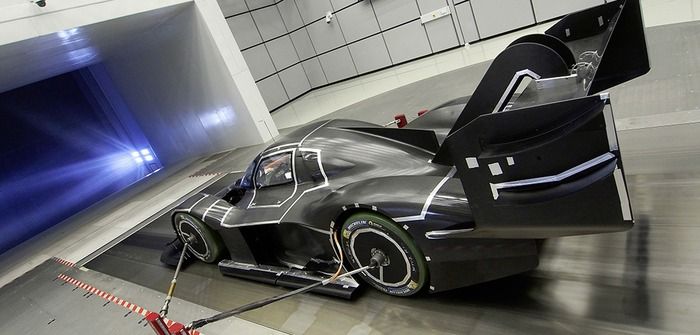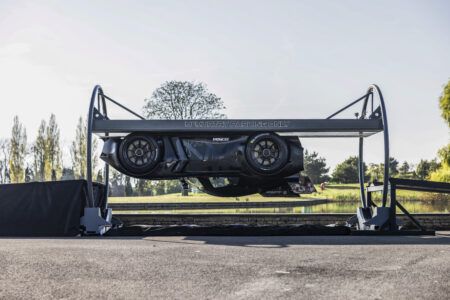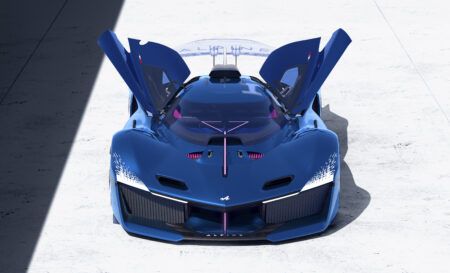Volkswagen has revealed development details for the aerodynamic package on the ID R Pikes Peak – the OEM’s first all-electric racing car. Given the unique conditions of the iconic Pikes Peak International Hill Climb event, Volkswagen’s engineers had to call on all their experience.
“The start line is located at an altitude of almost 2,900m, with the finish at 4,300m above sea level. The low air pressure up there means that the aerodynamic conditions are different to those at a racetrack on flat land,” explained François-Xavier Demaison, technical director at Volkswagen Motorsport and the project manager for the ID R Pikes Peak.
Compared to other racing categories, however, the relatively open regulations gave the engineers far more leeway with which to design the chassis and rear wing of the car.
During the winding 19.99km drive to the summit of Pikes Peak near Colorado Springs, USA, the car will reach a top speed of around 240km/h – well within the ID R Pikes Peak’s capabilities.
“For this reason, we concentrated mainly on achieving optimal cornering speeds. The entire chassis is designed to generate as much downforce as possible, without causing too much aerodynamic drag,” said Demaison.
The most obvious result of this approach is the seemingly oversized rear wing on the car. “The altitude on Pikes Peak means that the air we are driving through is on average 35% thinner. As a result, we lose 35% of our downforce compared to a racetrack at sea level. The huge rear wing allows us to compensate for some of this lost downforce,” explained Willy Rampf, a technical consultant on the project who has years of Formula 1 experience.
“The imaginative aerodynamic development means that we will still achieve maximum downforce greater than the weight of the car during the hill climb.”
Volkswagen Motorsport used a scale mode (1:2) to test a host of different variants of the Pikes Peak racer in the wind tunnel. The final touches were then put to a full-size chassis in the Porsche Development Centre in Weissach, Germany. “It was greatly beneficial to be able to use resources from within the group,” said Demaison.
New components were often rapidly produced on a 3D printer. “We printed about 2,000 parts. In doing so, we saved a lot of time,” said Hervé Dechipre, a CFD engineer at Volkswagen Motorsport who is responsible for the aerodynamics on the ID R Pikes Peak.
The electric engine on the ID R Pikes Peak must be cooled efficiently. However, the need for fresh air is far less than in the case of an ICE vehicle. It is also not necessary to guide any intake air to the two electric engines, which generate a total of 500kW (680ps), making it possible to reduce the size of the chassis inlet ports. In contrast, the thin air at altitude has a negative effect on the efficiency of the cooling.
Simulation software provided by technology partner Ansys is used to calculate the ideal compromise. “We could not manage this solely with the data from the wind tunnel, where it is not possible to recreate the thin air, for example,” said Demaison. “The simulation was a great help in determining the dimensions required for the cooling system.”
The first test run on the route is planned for the end of May. Driver Romain Dumas and the Volkswagen Motorsport team then begin the final phase of their preparations for the Pikes Peak International Hill Climb 2018 on June 24. The goal is to break the record in the class for electric prototypes, which currently stands at 8:57.118 minutes.





